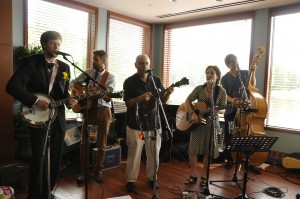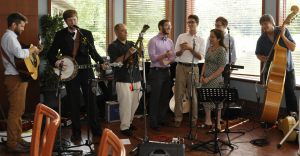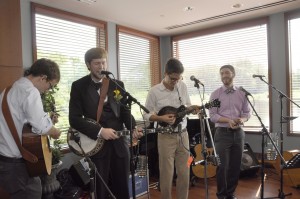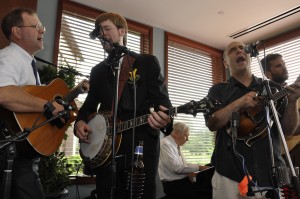Howdy, folks!
Well, Chris Rubeo gave me an idea today as we were talking about the many ways to increase internet visibility and successfully advertise our projects, like our band the Sparrows.
He’s putting together several sites, both for the band (thesparrows.bandcamp.com) and for himself (chrisrubeo.com) and we were talking about putting up links to each other’s sites and to the sites of the other band members, Perry Allen, Brian Barth, and Odetta Hartman.
And then he suggested that I start a blog.
And the strangest thing was that I actually thought I could do this. I mean, anyone can put together a blog, but I might be able to post content that is relevant to interested people, content that I have some authority on, content that will drive traffic to my page and then move that traffic over to other pages and generally boost the internet economic cycle in some intangible way.
So here goes: Since I am a banjo player, this blog is going to be about playing the banjo. I’ve been playing for about seven years now, and in that time I’ve been exploring this instrument, its sound, its history, its alluring charm. I’ve experimented with playing techniques and hardware modifications. I’ve tried different strings, picks, bridges, drumheads, pickups, even armrests.
With the banjo I’ve done some pretty fun things, too – I’ve played with groups and solo, in public and countless hours in private, at home and on tour around the country. I’ve taken musical and personal journeys as well, learning and writing songs for the banjo, and recording the banjo on several CDs, ultimately on my own CD in ten original songs.
At the time I am writing this, I may not be super-famous. While my CD is available on iTunes and Amazon, and you can hear it for free on Pandora, I don’t believe a huge number of people know who I am or have even heard of me. And the more I think about getting famous, becoming known to thousands or even millions of people all over the world, the more I wonder if it’s worth it. I’m not even talking about the “moral” cost of fame: the idea that when you become a superstar you lose a part of your soul. No, it’s just that our world has become so superconnected with the rise of the internet and of social networking norms in our generation, that the way fame works is a little different now. It’s easier to create content and to access worldwide availability, but it’s also harder to make your content stand out from all the rest. Things like memes and hit count have become more prominent, and maybe even more important, than they were before.
With all this new craziness, it’s important to remember two things – first, that this is pretty much a slightly different version of the old craziness (remember fast-talking radio ads? or door-to-door salesmen?) and second, that how popular you are on the internet doesn’t really matter as much as you might think.
What does matter, as far as I can tell, is the stuff that would matter anyway. Like, for example, playing the banjo.
I’ll step off my soapbox now and answer any questions about playing the banjo. That’s pretty much what I’m going to do here.
Posts will consist of information, experiences, and opinions that I think will be able to preemptively answer some of the frequently asked questions about playing the banjo in my own personal, different way. I’m sure that I will end up restating some answers to these questions almost word for word. I hope so. When it comes to things like music theory and good technique, it’s comforting to know that there are often, in fact, right answers to many questions. So if I say something that you have heard elsewhere, take it as a sign that it’s just true (or at least believed by many people, which is good enough, right?).
One more thing – I might occasionally have a musical idea that is best expressed as a video or sound recording, so that’s what I’ll do. I don’t want to try to express something in text like “move your hand a little to the right, but not that far, so that it is relaxed and slightly bent” that could be more clearly expressed visually or sonically.
Okay, so to recap: playing the banjo, how I do it, things I use, technique, music theory, composition and innovation, and the vaguer, broader category of real-world application, i.e. where and how to book a gig, how to fly with a banjo, or things like Pete Wernicke’s article in Banjo Newsletter about being a banjo ambassador and the value of sharing your music with others.
I won’t stress too much about posting constantly, so don’t expect a post a day. I don’t think I could come up with something meaningful every day even if I wanted to. Instead, I’ll just aim to fill this blog with helpful information as more of an archive resource.
Oh, and finally – it just occurred to me that there might be people out there, reading this blog, who do not in fact play the banjo. For those of you who are not yet convinced, I offer this encouragement, taken from the website of the American Banjo Camp at langston.com/ABC:
“The ability to play the banjo soon places one in a position to pick and choose among scores of social invitations. Everywhere, the banjoist is assured of a hearty welcome.”
|
| -1927 Gibson catalogue |
I don’t know what’s funnier, the idea that a banjo will open all your doors in life, or the pun about “picking” among your invitations.
Pick away!








